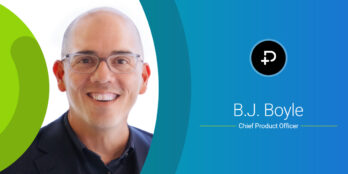
Don’t Mind – Mend the Health Data Gap
 4 min
4 min
For years, the industry has entertained buzzwords like “interoperability” and “big data,” but what progress has really been made if a universally recognized information gap still exists? Is closing this gap too inconvenient from a business standpoint? Do we truly not have the tech to bridge the gap?
The latest episode of PointClickCare’s podcast, Collision Point, joins together our own Colin Kemble, Senior Director of Customer Success, Nicole Sunder, Director of Health Plan Solutions, and Michael Keyes, Vice President of Health Plan Sales at PointClickCare, to explore the good, bad, and the ugly that is health data sharing.
What are the most important data sets to collaborate on and why?
Between providers, payers, and life science companies, the industry currently has unparalleled amounts of rich electronic health record (EHR) data to work with, which promise to provide a holistic view of the patient narrative for the first time in the history of care. The challenge, however, lies in interoperability.
Nicole explains that the most important data sets are those that encourage clear action within a particular workflow. And while we’ve certainly made strides in centralizing healthcare data to help determine key insights, we still have room for improvement in engaging patients and providers to leverage these insights at the time of care.
Why does the health data gap still exist?
There’s a clear hesitancy to sharing data coming out of each system – whether it be a provider’s EHR or a health plan’s claims adjudication system – for a number of reasons. Michael explained, “In part, there are security concerns, and we all go through the most rigorous security testing and high trust certification so that we can share data. But there’s still that hesitancy.”
There’s also a competitive component, he continued. A health plan might choose not to share their claims data because doing so would offer competitive intel around how they pay their claims. They may also keep their data close for fear of having an adverse effect on their payment. All of these policies have resulted in a wider health data gap over time, whether intentional or not.
What are some of the biggest pain points that health plans are experiencing right now?
One of the biggest pain points health plans are currently facing is the ability to share their data, which is often the most comprehensive view of a patient’s medical background, at the time when it’s most actionable for providers and patients.
Nicole added, “What we see across the industry is really that there is a difference in the maturity level of the ability not only to contribute information, but really be able to consume it. And so even if you’ve identified the fact that there’s a community health worker or a caregiver at home that wants or needs to take action, their ability to get access to that information and/or be able to contribute, it doesn’t exist in a standard way right now.” Understanding where to invest in standardization and infrastructure to have the greatest impact is top of mind for health plans.
What tools are available to promote provider, member, and payer engagement?
From a member engagement perspective, Nicole explained, it’s important to remember that each person can make decisions about their own healthcare. Building trust within the healthcare ecosystem itself and ensuring that we’re taking health literacy into consideration will be key to encouraging patients to seek out follow-up care and engage with available tools that will promote their long-term wellness.
From the provider perspective, there needs to be an incentive for providers to engage with payers. One incentive, Michael described, could look like automating the process of sharing patient data. Another incentive could revolve around value-based care contracting and showcasing an increase in both positive outcomes and costs saved.
Where do we go from here?
The key to optimizing investment in data standardization will lie in ensuring the entire spectrum understands the ‘why’ of interoperability – including providers, payers, and patients. Providers need to understand that it will lead to greater efficiency and better outcomes, payers need to understand that it will cut costs, and patients need to understand that they’ll receive more personalized care.
To learn more, listen to the full podcast episode on Collision Point, PointClickCare’s podcast.
April 13, 2023






